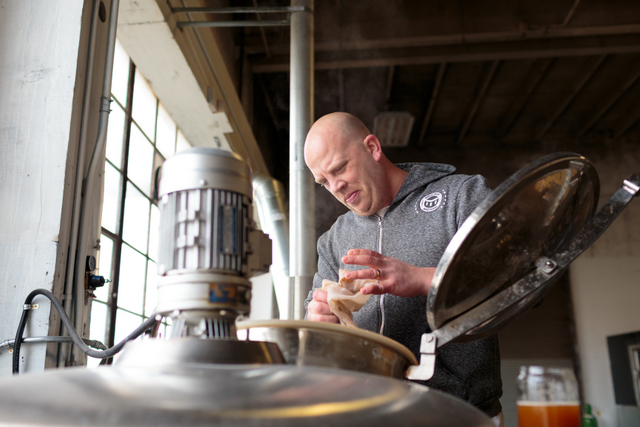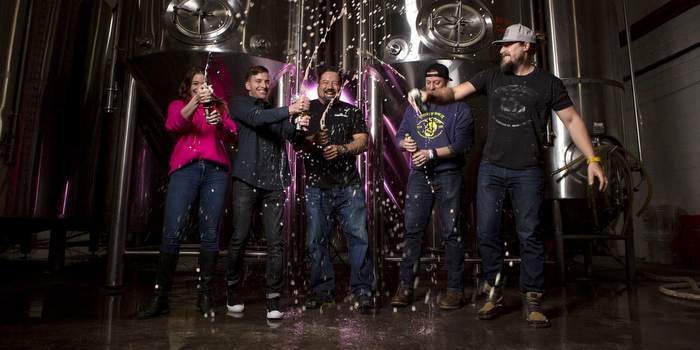Working capital line of credit
This loan provides working capital (cash) to smooth out the cash flow bumps of a seasonal or growing business. The credit line is available to act as a cushion to continue paying bills until sales increase and the related receivables start coming in as cash.
The term of the line of credit may renew yearly or every two or three years. The credit remains open and available for you to draw upon as you need it. The line of credit may be linked to your checking account using a sweep to line arrangement. Think of this like over-draft protection on your personal checking account. Any over-drafts on the business account get taken care of by the line of credit. Interest is charged on the principal — the outstanding balance. However, unlike a regular commercial term loan, there is not a set monthly payment schedule. Interest is charged and accumulates on the outstanding balance.
The interest rate may be based on Prime or LIBOR. A typical rate these days might be prime, or LIBOR plus 1.5 percent. There may be a requirement for the line to be paid down to zero for a period of time each year — say for 30 days out of a calendar year the loan needs to remain at zero.
The amount you can borrow on the line of credit will be determined by a few factors: how much you ask for, how much you really need, and how much collateral you have to support the loan. You can determine your needs by looking at your historical cash flows, or by making a projection of your upcoming needs. The bank will look to inventory and accounts receivable for the collateral on the loan. They may lend 50 to 60 percent of your total inventory value and 70 to 80 percent of your accounts receivable. Depending on the amount of those assets, this can be a good chunk of credit available when you need it. As with any open-ended credit (like credit cards) you’ve got to be disciplined with it. Just because the bank will loan it to you doesn’t mean you should spend it all.
Equipment line of credit
This loan is similar to the working capital line of credit, however the equipment line of credit is used specifically to purchase equipment. Setting up this loan gives you available credit to begin purchasing brewing equipment or other assets for your expansion. Once the equipment is purchased, interest only is charged on the outstanding balance. After a period of time, the equipment line of credit converts into a permanent loan with regular monthly principal and interest payments. This is also known as the commercial equipment term loan.
Commercial equipment term loan

This loan is used to purchase assets for your business. The re-payment term on the loan will vary based on the type of asset being purchased. For instance, warehouse equipment such as pallet jacks and forklifts will have a five-year term. Major brewery improvements, such as new construction, may have a 15-year term. Interest rates will be fixed for the period of the loan. Generally, the shorter the term, the lower the interest rate.
The collateral for the loan will be the asset that you purchase — brewing equipment, building improvements, etc. In order to secure its interest in the asset, the bank will make what’s known as a UCC filing on the assets. The UCC filing basically puts a lien on the equipment so that you can’t sell it without the bank’s permission.
Banks love to be protected, and collateral in the form of hard assets makes them feel safe and cozy. To make them feel even cozier, the bank will only loan 70 to 80 percent of the purchase price of the asset. You will need to put up the remaining amount as your equity in the asset.
Commercial term loans get paid down (amortize) with regularly scheduled payments. The payment schedule, or amortization schedule, shows how much of each monthly payment goes toward interest and how much goes toward paying down the loan principal. The portion that you pay toward interest expense is deductible on your income statement as an expense. The portion that you pay toward the principal is not deductible. You do get to write off the principal another way however, by depreciating the asset on your books. But that’s a topic for another day.
Commercial real estate loan
This type of loan is used to finance land, buildings or warehouses. Banks will typically write loans of 15 to 25 years on real estate, as they figure it’s safe collateral. Unlike your new brewery equipment that may lose 20 percent of its value as soon as you take delivery, the real estate is a safer bet to maintain value. The bank will write you a 20-year loan for the real estate purchase, but they won’t fix the interest rate for that long. Here we have the difference between the loan term and the re-payment period (amortization period). The bank may fix the interest rate for a period of seven years, and amortize the loan over 20 years. All this means is that they are writing the loan as if you will pay it off over 20 years, but after the fixed interest rate period expires (the end of the seventh year) the rate will change.
This is something to be mindful of when you take out a loan of this length — we’re in a favorable interest rate environment now, but it may not be so great when your fixed interest rate period comes up for renewal. Interestingly, you can get a mortgage on your home with a 30-year fixed interest rate, but few banks will fix the interest rate on your commercial real estate loan for longer than 7 years (unless you want to pay an absurdly high rate).
The reason is that banks are able to package up home mortgages and sell them on the secondary market. That didn’t work out so well during the mortgage crisis, but the 30-year rates are available today just the same. Unfortunately, there isn’t a secondary market for the loan on your warehouse, so the bank usually holds on to the note and doesn’t want to fix that rate too far in the future.
The amount the banks lend will be 70 to 80 percent of the value of the real estate. If it’s a new loan, or a re-finance, you will need an appraisal by a bank-approved appraiser. This will set the value and the bank will lend based on this number. So, if you’ve got a $3 million value, the bank will lend up to 80 percent or $2.4 million, and you’ll need to come up with the remainder. The remainder is your equity and serves as more protection for the bank should there be a problem. Right out of the gate, their loan is only 80 percent of the market value of the property.
Brewery expansion loan structure example
In the banking world, what you need for the brewery expansion are known as “uses” and the funds to pay for those needs are known as “sources.” One of the first steps in planning your brewery expansion is to list out your needs (uses) and match these up to where the funds will come from (sources). For example, let’s say you need $2 million for brewery equipment and $1 million for construction to expand your warehouse. These are your uses. Most banks will finance 70 to 80 percent of the cost, and the remainder will need to come in the form of equity. In this example, the total needs (uses) are $3 million. The sources of funds on the project are bank loans of $2.4 million and equity of $600k.
Continuing the example, the bank loans will look like this:
Commercial equipment term loan to finance the $2 million of brewery equipment: $1.6 million loan, seven-year term, interest rate of 5 percent, with monthly payments of $22,600. The loan will be fully paid off in the seven years.
Since we are buying $2 million of equipment, and the bank is only financing $1.6 million, we need to come up with the remaining cash of $400k. This can come in the form of cash on hand, additional contributions from brewery partners or some combination of the two.
Commercial real estate loan to finance the $1 million warehouse expansion: $800k loan, five-year term, 15 year amortization period, 5-percent interest, with monthly payments of $6k. The five-year term of the loan means that the interest rate is fixed for this period of time. The 15-year amortization period means that the bank is spreading the payments over a 15-year time period. The loan will not be paid off after the five-year term but will renew at the prevailing interest rate at that time.
Since the warehouse expansion will cost $1 million, and the bank will only finance $800k, we have to come up with the additional $200k in the form of cash or additional equity contributions from partners.
Follow the cash flows. The new loans will require new loan payments. Based on our example above, we will need to come up with $600k in cash to fund the difference between total brewery expansion costs and the amount the bank will loan. We will also have new monthly payments of principal and interest which total $28k per month to pay for the new loans.
These cash obligations will be built into your financial pro forma. The financial pro forma is a projection of income, expense and cash flows to ensure you are able to meet these new obligations.
Wrap up

This article provided an introduction to financing basics — the nuts and bolts of borrowing money to finance your expansion. We began with loan terminology, reviewed the different types of loans that banks provide and finished with an example of a typical expansion financing arrangement.
The decision to expand your brewery is a big one and it comes with risks and rewards. The rewards include being able to produce more beer to meet demand. The risks include being able to pay back the new loans to the bank.
Read through the loan terms above and get a working knowledge of the types of loan structures. Talk with other craft breweries to learn how they financed their expansion. Arm yourself with knowledge so that you can get the best loan arrangement possible for your brewery expansion. The world needs your beer. Now, get out there and expand.
Kary Shumway is the founder of Beer Business Finance, an online resource for beer industry professionals. Shumway has worked in the beer industry for more than 20 years as a Certified Public Accountant and currently as chief financial officer for Clarke Distributors Inc. in Keene, N.H. Beer Business Finance publishes a weekly beer industry finance newsletter, offers guide books on topics such as sales compensation planning, SKU management and financial literacy and produces a weekly podcast. The newsletter with a free six-month trial, industry guides and podcast are all available at www.BeerBusinessFinance.com.






Leave a Reply
You must be logged in to post a comment.